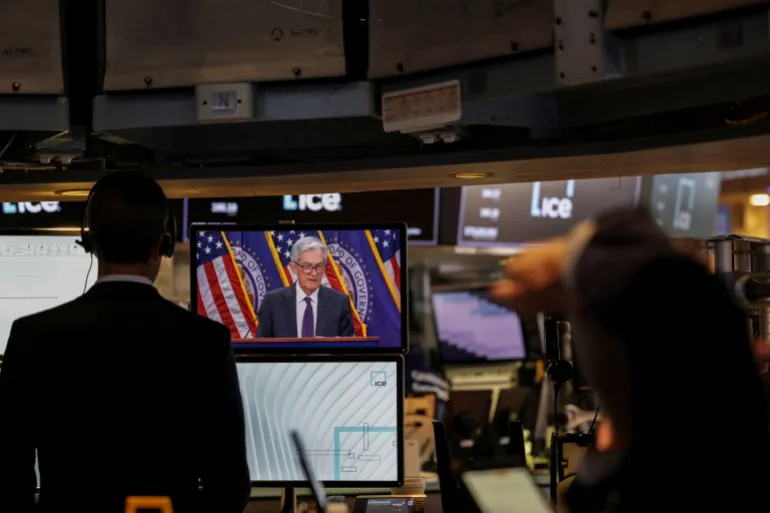The United States remains the largest economy globally, accounting for 26% of the world’s GDP, which reached $111.33 trillion by the end of 2024. The US dollar continues to serve as the primary currency for international transactions, a role solidified since the post-World War II era and the rise of globalization. However, this financial dominance has generated significant imbalances, affecting economies worldwide—from the abandonment of the gold standard to the imposition of protectionist tariffs during Donald Trump’s presidency. n nThe Federal Reserve’s recent decision to cut interest rates by 0.25% triggered immediate reactions across global markets. Gold prices and cryptocurrency valuations rose, and several nations followed suit with their own rate reductions. Yet, Federal Reserve Chair Jerome Powell cautioned that inflation remains elevated at 3.5% and labor market weakness persists, suggesting that further easing might be halted, reigniting concerns about economic stagnation. n nThis creates a complex dependency: global financial stability is heavily influenced by US monetary policy. Rate hikes burden indebted nations, while cuts reduce returns for countries with financial surpluses. The dollar, meanwhile, functions not only as a medium of exchange but also as an instrument of geopolitical leverage—its fluctuations impact national wealth and individual savings, and it is frequently used to enforce economic sanctions. n nSince the 2008 financial crisis, calls for reducing reliance on the US-led system have intensified. Yet, the absence of a credible, equitable alternative continues to perpetuate global dependence. There is growing urgency for a new international monetary framework—one that introduces a fairer reserve currency, establishes balanced rules for exchange rates, interest rates, and inflation control. n nUntil such a system emerges, the global economy will remain vulnerable to policy shifts in Washington and the volatility of American financial decisions. n— news from أخبار الغد n
— News Original — nأميركا بين التفرد الاقتصادي وإرباك النظام العالمي: الفائدة والدولار في قلب المعادلة nتتصدر الولايات المتحدة الاقتصاد العالمي بحصة تبلغ 26% من الناتج المحلي الإجمالي البالغ 111.33 تريليون دولار بنهاية 2024، محتفظة بالدولار كعملة رئيسية للتسويات الدولية. n nغير أن هذا التفرد، الذي تعزز منذ الحرب العالمية الثانية وصعود العولمة، ألقى بظلاله السلبية على بقية الاقتصادات، من التخلي عن قاعدة الذهب إلى سياسة الرسوم الجمركية في عهد الرئيس الأميركي دونالد ترامب. n nقرار الفدرالي الأميركي الأخير بخفض الفائدة 0.25% انعكس مباشرة على الأسواق العالمية، فارتفعت أسعار الذهب والعملات المشفرة، وتبعت دول عديدة القرار ذاته. n nلكن تصريحات رئيس الفدرالي جيروم باول حملت تحذيرات من مخاطر استمرار التضخم عند 3.5% وضعف سوق العمل، مما قد يوقف مسار التخفيضات ويعيد شبح الركود. n nالمعضلة أن العالم كله يظل أسير سياسات الفائدة الأميركية؛ ارتفاعها يضر بالدول المقترضة، وانخفاضها يقلل عوائد الدول ذات الفوائض المالية. n nأما الدولار فبات سلاحًا اقتصاديًا وسياسيًا في آن واحد، إذ تؤثر تقلباته على ثروات الدول ومدخرات الأفراد، وتُستخدم أدواته في فرض العقوبات الاقتصادية. n nومع تصاعد الدعوات منذ أزمة 2008 لفك الارتباط عن الهيمنة الأميركية، لا يزال غياب البديل العادل يرسّخ التبعية. n nفالحاجة ملحّة إلى نظام نقدي عالمي جديد يطرح عملة تسوية دولية بديلة، ويضع قواعد عادلة لسعر الصرف والفائدة والتضخم. n nوحتى يتحقق ذلك، يبقى الاقتصاد العالمي رهينة قرارات واشنطن وتقلبات سياستها النقدية.
